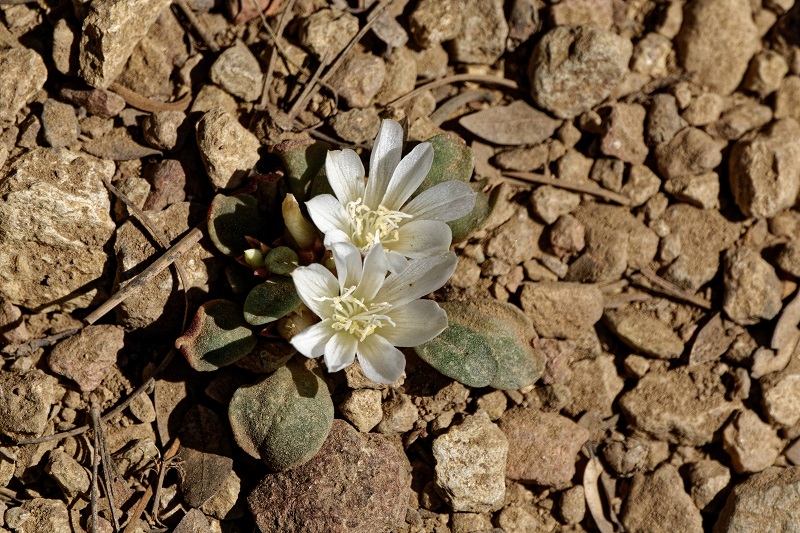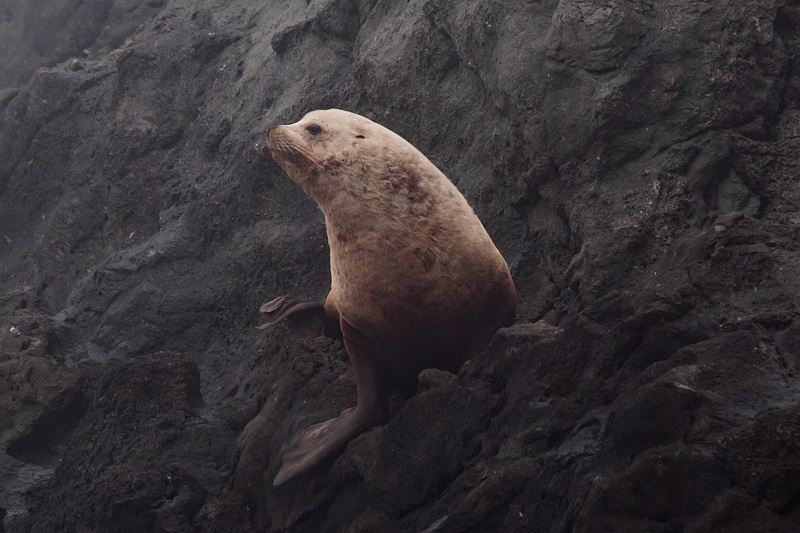
Lewisia kelloggii ssp. kelloggii – Kellogg’s lewisia
Submitted by Ellen Sampson and Randy Roig
This inconspicuous flower was found by Ellen Sampson and Randy Roig in Sierra County. Lewisia kelloggii ssp. kelloggii was listed in 2013 as Rank 3.2 (more information needed, but moderately threatened in California) in the California Rare Plant Ranking System. Plants listed as Rank 3 all lack enough information available to consider them rare (Rank 1B or 2B) or of limited distribution (Rank 4), but the information that is available indicates that they are in need of conservation. Once a plant has been determined to be Rank 3, the hope is that new information will be generated from additional surveys, which will allow for a reevaluation of the rank at a later time. Lewisia kelloggii ssp. kelloggii is found in openings and ridgetops of upper montane coniferous forest often in slate or sometimes in rhyolite tuff along the Sierras. It blooms from May through August with the occasional early bloom in April. Keep an eye out for this little gem when taking those summer hikes through the Sierras. Thank you, Ellen and Randy, for finding this amazing flower and adding to what we know about it!

Eumetopias jubatus – Steller (northern) sea lion
Submitted by Ryan Elliott of the California Natural Diversity Database
CNDDB’s very own Ryan Elliott was able to snap this awesome profile shot of a Steller sea lion at Cape Mendocino. Cape Mendocino is home to one of California’s largest breeding rookeries and has been active for over a century. The Steller sea lion was first described in 1741 by Georg Wilhelm Steller and therefore named after him. Steller sea lions spend most of their time in the water feeding, but haul-out onto rocks and shores to rest, reproduce, and raise their young. Their range spans from Japan to California and are split into two distinct population segments, eastern and western, at Cape Suckling in Alaska. California is home to the Eastern DPS which has seen major population declines due to intentional culling and commercial harvests. Currently, Steller sea lions are protected under both the Endangered Species Act and the Marine Mammal Protection Act, and are considered a California Species of Special Concern. The California Natural Diversity Database has 38 rookery and haul-out occurrences along the coast. Many thanks to Ryan for submitting this stellar observation!
Do you have some great photos of rare plants or wildlife detections? Submit them along with your findings through our Online Field Survey Form and see if your photos get showcased!